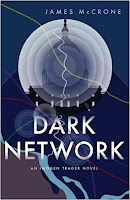“Death on the Nile” by Agatha Christie – Murder Doesn’t Take Vacations
While our beloved crime fighters seek to go on vacation once in a while, we, the readers, know all too well that crime doesn’t take vacations, as can be plainly seen in Agatha Christie’s Death on the Nile.
In this murder mystery of hers, our favorite Belgian investigator, Hercule Poirot, attempts to escape from his seemingly murder-filled life in England in favor of an excursion into Egypt.
However, as it always happens, Poirot’s plans for a vacation are ruined when a perplexing murder occurs on the cruise ship, with circumstances forcing Poirot and Hastings to do what they do best: find the clues, dismiss the red herrings, rebuild the chain of events, uncover a deep murder plot and finally bring the real culprit to light.
It seems as if Death on the Nile, along with Murder on the Orient Express as well as And Then There Were None, has become one of those Agatha Christie novels which have become popular practically everywhere in the world. This is the case perhaps because this novel allows Agatha Christie’s strengths to shine brighter than a thousand suns.
All of the characters in the story are stuck together in a relatively confined space for a long enough time for Poirot to conduct his investigation. Every character truly has something strange, peculiar or noteworthy to them, at least just enough to cast a shadow of suspicion as to their role in this whole affair.
The murder itself is actually very strange (at least at first), with the apparent murderer having a rock-solid alibi for the time of the killing and no one else to take the blame.
As is customary with Agatha Christie, from a technical perspective the novel is something from which other authors should draw inspiration from. She doesn’t unnecessarily dwell on useless descriptions , nor does she throw senseless red herrings or reveal some kind of plot-changing truth a few pages before the end.
No, Death on the Nile is an astonishingly well-crafted mystery where the reader is given just enough to be able to solve the mystery, without of course making it easy on you (far from it, actually).
What I particularly enjoyed about this book is that it can cater to virtually any type of mystery reader. For instance, those who like to actively solve mysteries as they read them won’t be disappointed here, at least not with anything else other than their inability to solve the crime (of course, I’m not doubting your intellectual capabilities but simply outlining the brilliance of the crime here).
Those who enjoy mysteries simply for their entertainment factor and like to have the answer given to them at the peak of the intrigue will also take well to Death on the Nile as it has one of the most satisfying conclusions Poirot has ever had the pleasure of leading a case into.
All in all, it’s definitely a murder mystery classic which cannot be missed by fans of the genre.
In this murder mystery of hers, our favorite Belgian investigator, Hercule Poirot, attempts to escape from his seemingly murder-filled life in England in favor of an excursion into Egypt.
However, as it always happens, Poirot’s plans for a vacation are ruined when a perplexing murder occurs on the cruise ship, with circumstances forcing Poirot and Hastings to do what they do best: find the clues, dismiss the red herrings, rebuild the chain of events, uncover a deep murder plot and finally bring the real culprit to light.
It seems as if Death on the Nile, along with Murder on the Orient Express as well as And Then There Were None, has become one of those Agatha Christie novels which have become popular practically everywhere in the world. This is the case perhaps because this novel allows Agatha Christie’s strengths to shine brighter than a thousand suns.
All of the characters in the story are stuck together in a relatively confined space for a long enough time for Poirot to conduct his investigation. Every character truly has something strange, peculiar or noteworthy to them, at least just enough to cast a shadow of suspicion as to their role in this whole affair.
The murder itself is actually very strange (at least at first), with the apparent murderer having a rock-solid alibi for the time of the killing and no one else to take the blame.
As is customary with Agatha Christie, from a technical perspective the novel is something from which other authors should draw inspiration from. She doesn’t unnecessarily dwell on useless descriptions , nor does she throw senseless red herrings or reveal some kind of plot-changing truth a few pages before the end.
No, Death on the Nile is an astonishingly well-crafted mystery where the reader is given just enough to be able to solve the mystery, without of course making it easy on you (far from it, actually).
What I particularly enjoyed about this book is that it can cater to virtually any type of mystery reader. For instance, those who like to actively solve mysteries as they read them won’t be disappointed here, at least not with anything else other than their inability to solve the crime (of course, I’m not doubting your intellectual capabilities but simply outlining the brilliance of the crime here).
Those who enjoy mysteries simply for their entertainment factor and like to have the answer given to them at the peak of the intrigue will also take well to Death on the Nile as it has one of the most satisfying conclusions Poirot has ever had the pleasure of leading a case into.
All in all, it’s definitely a murder mystery classic which cannot be missed by fans of the genre.
 | Agatha Christie |








Comments
Post a Comment